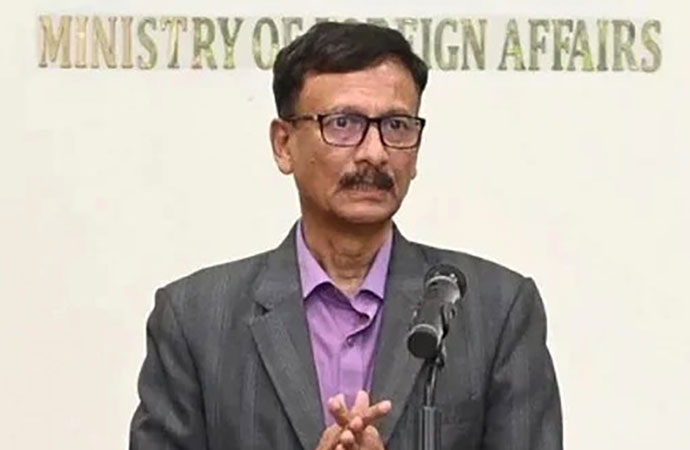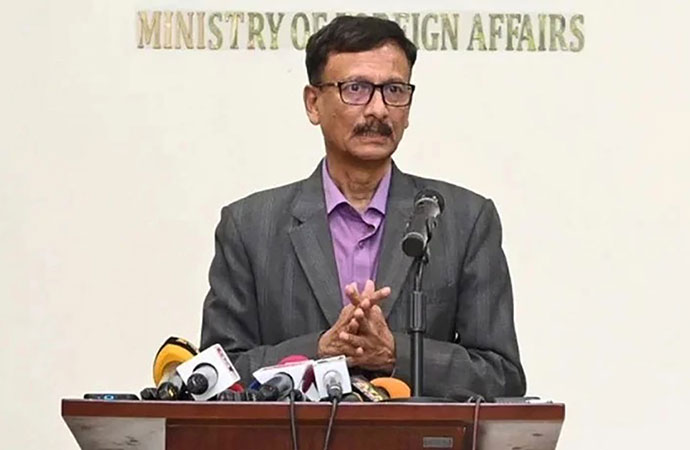Technology

GPS tracking periodic slow slip and tectonic setting.
A group of Italian scientists were put on trial for not correctly predicting a 2009 earthquake that killed 309 people. Consequently, seven scientists were found guilty of manslaughter and they were sentenced to six years of prison. An earthquake causes intense trembling or shaking of the ground, resulting in disruption and destruction of any object. The most destructive element of earthquakes is that they can strike anywhere, anytime. Almost half a million earthquakes happen every year globally, but most of them are so small that they go undetected by the common public. There is no evidence showing that a major earthquake has ever been successfully predicted. But, following scientific approaches a forecast might be made in probabilistic terms, of which few are discussed here.
Outer crust of earth sits on several tectonic plates of rocks. Earthquakes are most often caused by the movement of tectonic plates, volcanic activity, or human activities like explosions, underground construction, and nuclear tests. An earthquake prediction must define elements like the date and time, the location, and the magnitude.
For monitoring Earth's crust several continuously operating satellite sensors have been put in many areas all over Australia. By comparing the rate of movement of each individual sensor compared to the other sensors, scientists can see which areas of the plate are moving faster than others. Distortions in the plate's movements allow to identify accumulation of stress and strain. Stress is the force being exerted on the rocks, and strain is the deformation of the rocks in response to the stress. Monitoring these factors can provide clues as to where an earthquake might be likely to occur. Finding critical point for strain accumulation or maximum limit of strain for crust will allow to predict clearly an earthquake. Neotectonics is a branch of Earth Sciences that studies the present-day motions of the Earth's tectonics plates. It analyses data from ranges of geological and geophysical methods, including GPS studies, morphotectonic studies, geodesy, and passive source seismology. They also combine data from field work, seismic, experimental, computer-based, and theoretical studies.
Global positioning System (GPS) monitoring of crustal strain has become very popular in recent years. In Japan, more than 1000 fixed stations for GPS observation were distributed across the country at the end of the 1990s. Collected data are analysed in the Geographical Survey Institute (GSI). It is hoped that the relation between crustal strain and earthquake occurrence will be defined more clearly by this system in the near future. A similar GPS network has been operating in California, where the seismicity is fairly high. In California earthquake-rupture forecast also analysed. It indicates where and when the Earth might slip along the faults. A ground motion prediction model estimates the ground shaking given one of the fault ruptures.
An earthquake's magnetic field is created by phenomena called the piezo-magnetic effect. Earthquakes relieve stresses built up between tectonic plates. In Japan, researchers found that slow slip events either coincide or precede large magnitude earthquakes along the major subduction zone. In particular, a slow slip sequence preceded the magnitude 9 Tohoku earthquake of 2011 and probably affected the stress field of the fault. Recognizing and understanding these repeating silent slip sequences will improve earthquake forecasts and probabilities.
University of California San Diego, uses a combination of data from satellites (GPS and microwave radar) to pinpoint to the millimeter the movement of tectonic plates. Here, a satellite sends a microwave pulse toward the Earth's surface, and then records the radar "echo." From that, computers create a digital terrain map that spans hundreds of square miles, with a resolution of about two meters. It is compared with earlier recorded data. Movement of fault shows amount of elastic strain. This strain is released by earthquakes. The greater the elastic stress on the plates, the greater the earthquake required to release it. Certainly it keeps scientists now closer to understanding the timing of seismic events than we've ever been.
A team of Penn State researchers demonstrated that deep learning algorithms which encompasses machine learning and artificial intelligence can predict future earthquakes. Using ultrasonic sensors they measured velocity, power and frequency from ultrasonic signals recorded from an artificially generated in laboratory.
We can utilize both forecasting and predictive indicators for decision making. Scientists have learned that large, powerful earthquakes commonly occur in groups, not in random patterns. Sun is constantly bombarding the solar system with vast amounts of energy and particles in the form of the solar wind. Sometimes, formidable eruptions on the sun's surface cause coronal mass ejections, or especially energetic floods of particles including ions and electrons. Research suggests that as positively charged protons from the sun crash into Earth protective magnetic bubble, they create electromagnetic currents that propagate across the globe. Pulses created by these currents could then go on to deform quartz in Earth's crust. It can generate an electrical pulse through a process known as the piezoelectric effect. The researchers think that such small pulses could destabilize faults that are already close to rupturing, triggering earthquakes.5 So, compiling measurements of protons by satellites can assist in predicting the earthquake.
Chemical changes in groundwater have been found in certain earthquake sites. An increase in the concentration levels of dissolved minerals and gaseous components, which may be due to below-ground shifts, has been noted.
The ratio of velocity of primary and secondary seismic waves, is considered by some as a potential prediction method.
Major earthquakes are often preceded by minor tremors, called foreshocks. These are generally considered good enough indicators to issue warnings and trigger safety measures.
In 1989 a magnetometer looking for ultra-low frequency (ULF) signals recorded sizable electromagnetic (EM) activity prior to the nearby Loma Prieta earthquake. Again, geoscientists announced that satellite observed a dramatic increase in ULF radio waves over Haiti in the month before the 2010 earthquake.
Seismic instruments can rapidly detect an earthquake as it begins to unfold and communicate a warning before shaking arrives. The warning message can be transmitted almost instantaneously, whereas the shaking waves from the earthquake travel through the shallow layers of the Earth at speeds of one to a few kilometers per second. Installing offshore earthquake warning sensors on Canada's largest fault can identify precursory signals when stress in the Earth's crust would accumulate. These have been measured by variations in radon, the electromagnetic field, thermal infrared radiation, outgoing longwave radiation, and the total electron content of the ionosphere. Earth observations from sensors both in space and on the ground present new possibilities for investigating the build-up of stress within the Earth's crust prior to earthquakes and monitoring a broad range of abnormal phenomena that may be connected.
Some earthquake precursors may be more apparent to animals, with their more refined senses. It is examined that common toads can detect seismic activity days in advance of a quake. 96 percent of male toads in a population abandoned their breeding site five days before the earthquake that struck L'Aquila, Italy, in 2009. Researchers believed that they can detect subtle signs, such as the release of gases and charged particles, that may occur before a quake. 4 Few ants also have this quality. Active faults, fractures where the Earth violently ruptures in earthquakes, are the preferred housing site for red wood ants in Germany. Before an earthquake, the ants were awake throughout the night, outside their mound, vulnerable to predators. Normal ant behavior didn't resume until a day after the earthquake. The insects pick up changing gas emissions or local shifts in the Earth's magnetic field. From ancient times animals have been found to flee the scene in the days before an earthquake. Restlessness and abnormal behaviour are also said to be observed in animals before earthquakes.
Human activities that change stresses in Earth's surface like hydraulic fracturing and wastewater disposal are known to cause earthquakes. In hydraulic fracturing, a slurry of water, sand, and chemicals is pumped through the ground at high pressures, cracking open rocks to release oil and natural gas. This produces tiny earthquakes that usually can't be detected without sensitive instrumentation. Disposing of wastewater by pressure into the crust shift away from the designated well. It can reach a well-oriented fault that is close to breaking and cause it to slip. Since these deeper faults are often larger, they are capable of producing larger earthquakes. As example, a geothermal plant in Switzerland caused a 3.4 magnitude earthquake in 2006.
Another reason is shifting huge mass of earth to create load imbalance. Creating dams can change the weight on a certain area of a tectonic plate by hundreds of millions of pounds. As example, when the Hoover Dam in USA was created, hundreds of small earthquakes were detected in the region, despite it not being seismically active before that point. Some researchers believe that few earthquakes are caused by reservoir and damming efforts in seismically active areas. Mining thousands of tons of coal from the center of a mountain can, once again, dramatically shift the stress load on a tectonic plate, resulting in small seismic quakes resulting purely from human activities.
Earthquakes originate many miles below Earth's surface. It could be that there are warning signs down there, but scientists still find it hard to know what to look for when searching for key seismic signals underground. It's really hard to predict an earthquake, but scientists are getting closer.
Mohammad Mahmudur Rahman Niaz is a civil Engineer and a serving Military Officer. Email: niaz7m@yahoo.com

























Leave a Comment
Recent Posts
Remembering Kalidas Karmakar ( ...
The art world remembers Kalidas Karmakar, a visionary whose creativity ...
An Evening with Shishir Bhatta ...
Cosmos Art Echo, the artist talk initiative of Gallery Cosmos and Cosm ...
Myanmar denies genocide, calls Rohingya crackdown co ..
Yes, of course
Earth’s average temperature last year hovered among ..
Bangladesh and Singapore: A Tale of Two Nations